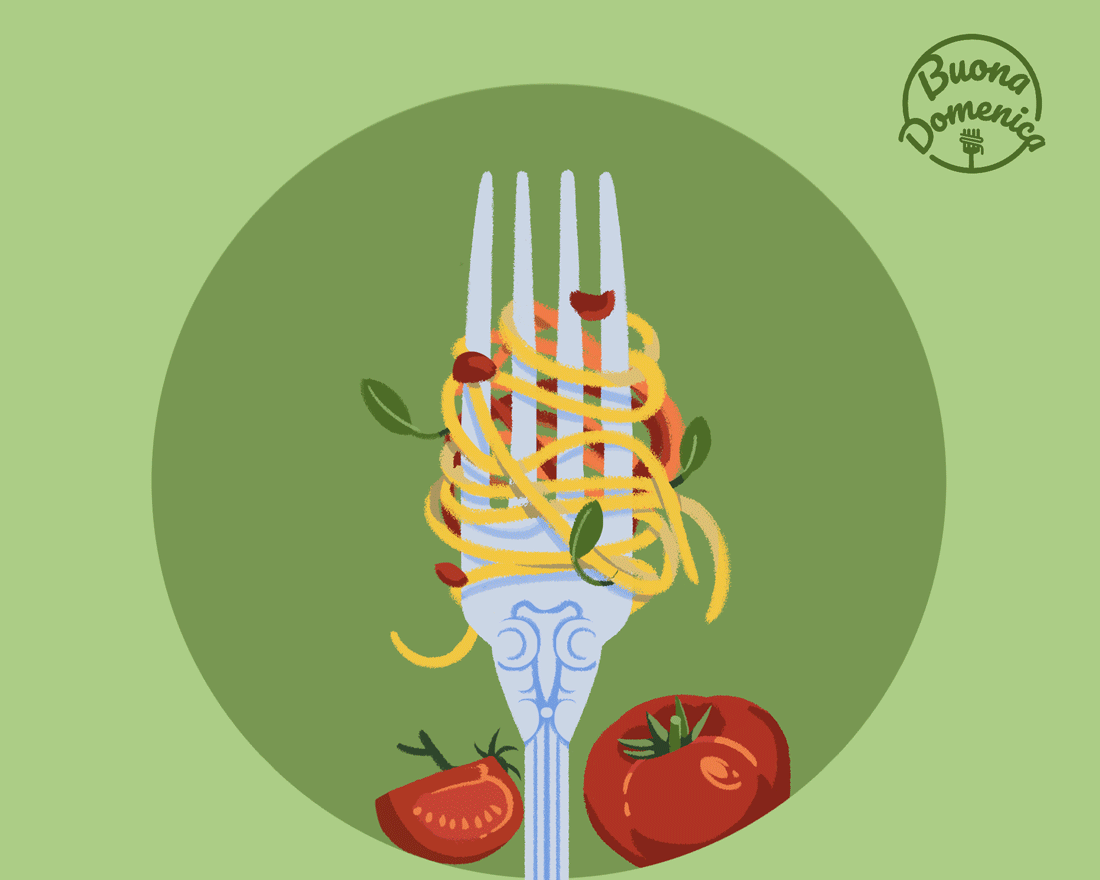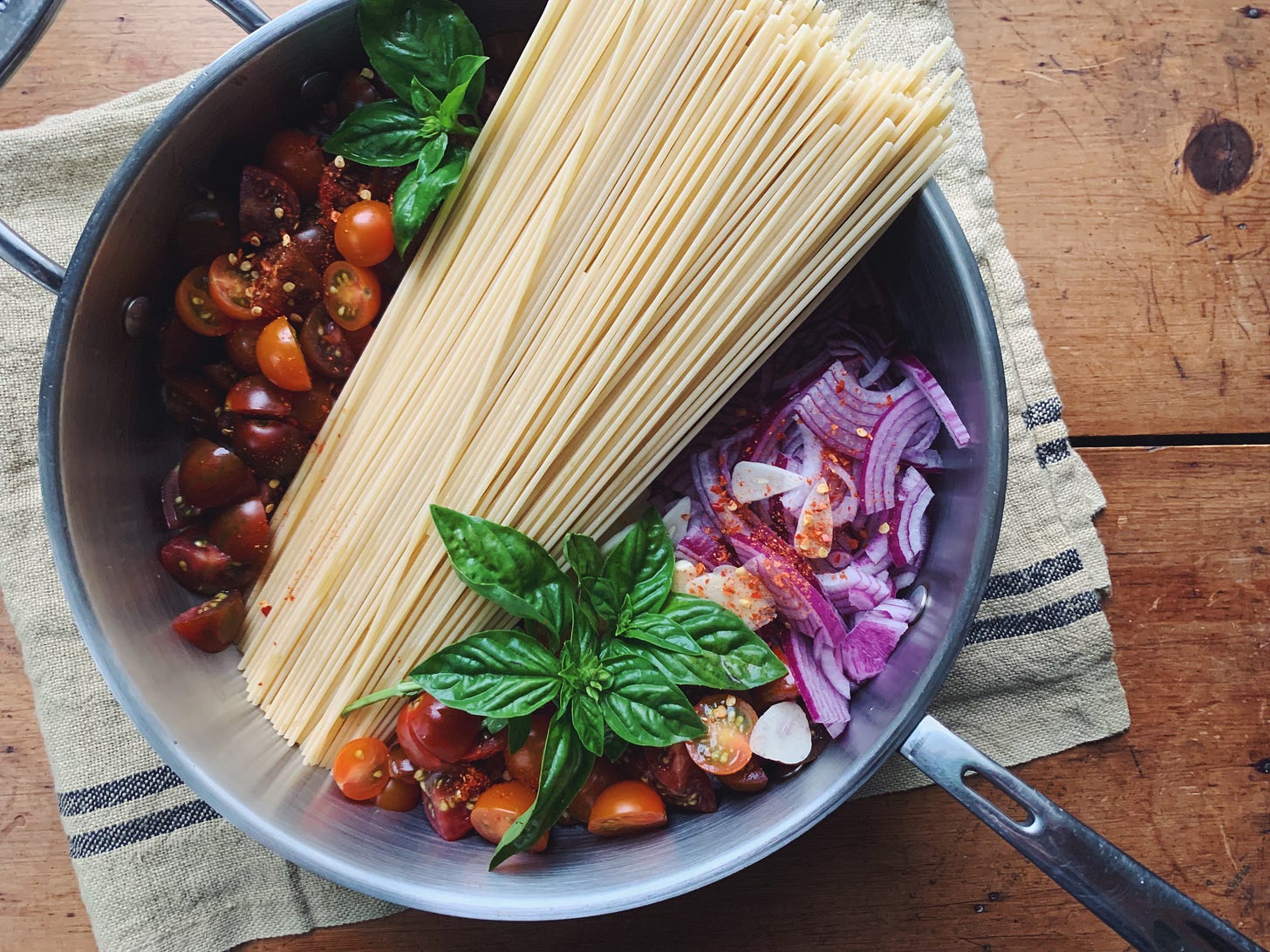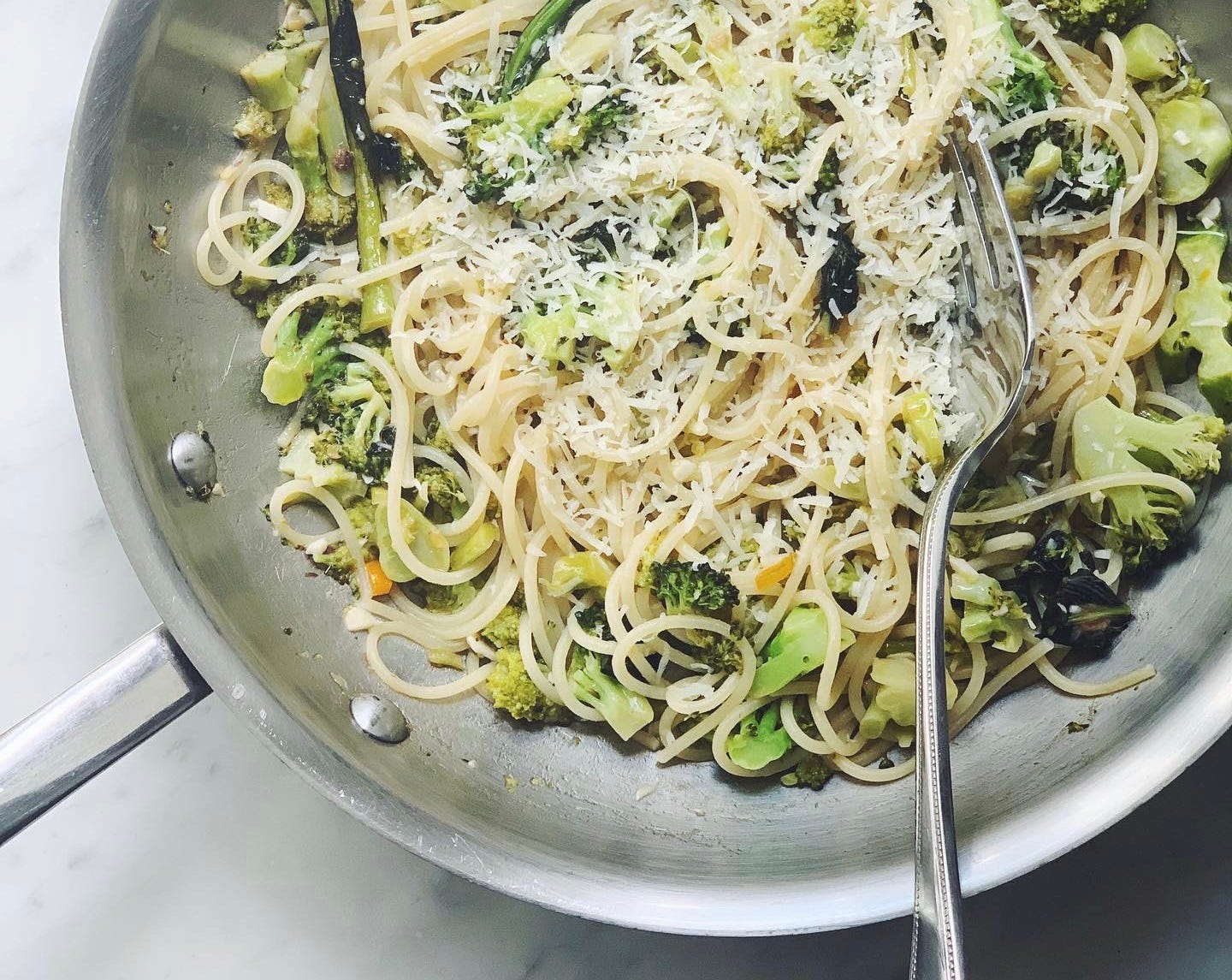
I admit to being a contrarian when it comes to food trends (especially Italian food trends). I like to do my own thing, so when the fooderati zig, I tend to zag. That is how I managed to (blissfully) avoid the one-pot-pasta trend of the last few years. The thought of dumping raw spaghetti, garlic, vegetables, and water into a single pot and simmering it like some weird noodle stew did not inspire confidence in this pasta-loving traditionalist, so I steered clear.
Then, last January, I got an email from Steve Dunn, an associate editor at Cook’s Illustrated. Steve and I became acquainted via email and social media when he used my Baci di Dama recipe as a blueprint for his recipe published a few years ago in the magazine (with minimal changes, I’m happy to say). This time, Steve wanted to know if I was familiar with a pasta dish from Puglia called Spaghetti all’Assassina (assassin’s spaghetti). I wasn’t, but through a quick google search I learned that the pasta is cooked using a method called “risottatura,” that is, in the style of risotto. Rather than boiling the spaghetti in water and tossing it with sauce, you simmer raw noodles in a small amount of tomato passata (purée) and then add a broth made of tomato paste and water by the ladleful. At the end of cooking, you turn up the heat to give the spaghetti a scorched, crunchy, caramelized bottom, sort of like Italian tahdig. The dish was apparently invented by a chef at a restaurant in Bari some decades ago.
I was curious and I made a mental note to revisit it at some point. Then, truth be told, I forgot about it…until a few weeks ago when I was paging through my Sept/Oct issue of Cook’s Illustrated and came across Steve’s article and recipe. And before you know it, I found myself going down a one-pot pasta rabbit hole.
One Pot, Different Methods
The “risottatura” method used in Spaghetti all’Assissina is markedly different from the technique used in standard one-pot pasta recipes, which calls combining all the ingredients, still raw, in a single pot or pan and cooking them together (as I so lovingly described at the top of this newsletter). The results, as it turns out, are also markedly different. I know, because I finally broke down and tried one of the most popular one-pot pasta recipes out there: this one by Martha Stewart, with cherry tomatoes, onions (a lot), garlic, and basil. The head note even states “it’s one of our most popular recipes.” It also states that it was “inspired by a dish one of our food editors ate in Puglia, Italy,” which really piqued my interest. It had to be a riff on spaghetti all’assassina.
The instructions for the Martha Stewart recipe couldn’t be easier:
“Combine pasta, tomatoes, onion, garlic, red-pepper flakes, basil, oil, 2 teaspoons salt, 1/4 teaspoon pepper, and water in a large straight-sided skillet. Bring to a boil over high heat. Boil mixture, stirring and turning pasta frequently with tongs, until pasta is al dente and water has nearly evaporated, about 9 minutes.”
I made it, and it was a dud. On this my husband and daughter agreed with me. Although the sauce tasted fine, like a simple summer tomato sauce, the texture—”goopy” is how our daughter put it—made it unpleasant to eat. There was too much starch coating the glutinous tangle of noodles, and the texture of the overcooked cherry tomatoes and heaps of onions (2 cups!) bordered on slimy. It was not at all what I’d hoped for, and (alas) just what I expected.
(Have you tried this recipe? I’d love to know your thoughts in the comments, especially if you liked it. I’m wondering if I’m missing something, given its popularity.)
A Compromise
Having taken the plunge, I wasn’t ready to give up entirely on one-pot pasta, so I clicked around and found this instructive article from New York Times, basically a formula for how to make one-pot pasta with any number of ingredients. The difference between this method and that of Martha Stewart is that the Times method starts with sautéing base ingredients (vegetables, aromatics, etc.) to soften them and develop flavor before adding raw pasta and water and simmering everything together.
I went with the suggested pairing of broccoli, anchovies, and garlic, a classic southern Italian combination. I softened the garlic and then cooked the chopped broccoli just until tender before adding raw spaghetti to the skillet. As soon as I poured in the 5 cups of water and saw the bits of broccoli bobbing around, I knew I would be disappointed with the result. By the end of cooking, the broccoli had lost its sweetness. The dish “wasn’t bad,” was how my family put it, but the sauce had lost its vigor and the spaghetti, though not as starchy as Martha Stewart’s, was sticky. At this point, we realized that the one-pot method, while convenient and even a little clever, probably wasn’t meant for us. I rejiggered the recipe in a more conventional way that we all enjoyed much better. I’ve posted it on my website.
Evviva l’Assassina!
I wasn’t sure what to expect when I finally got around to trying the peculiar and rather labor-intensive method for Spaghetti all’Assassina. It takes more skill and attention to pull off than the throw-everything-into-a-pot-and-see-what-happens technique and I wouldn’t recommend it if you’re trying to get dinner on the table fast (it takes 30-plus hands-on minutes). But the result is unique. Surprisingly (to me, anyway) spaghetti cooked in this way does not turn out goopy or overstarchy, maybe because liquid is added a little at a time and then left to evaporate. I’m not a chemist, so I don’t know. But somehow it works. The noodles take on the flavor of the tomato broth, and the final step of crisping the bottom layer of spaghetti adds crunch, sweet caramelization, and, as Steve puts it in his Cook’s Illustrated article “a sultry smokiness.”
The original recipe does not call for cheese, but I showered ours with grated Pecorino at serving time, and felt it brought everything—the sweetness and smokiness and the concentrated tomato flavors—together nicely.
Premium subscribers: Scroll down for the recipe for Spaghetti all’Assassina, as well more information on the cookbook giveaway. If you’re a free subscriber and would like to view the rest of the newsletter, join now for only $5 a month or $50 a year to gain full access.
Keep reading with a 7-day free trial
Subscribe to Buona Domenica to keep reading this post and get 7 days of free access to the full post archives.






